Wastewater Facilities Project

WPI Boston Project Center: Keeping Wastewater Facilities Up and Running
Student Project Evaluates Back-up Power Plans to Prevent Disruptions in Wastewater Treatment
Even when a blizzard, an accident, or an unknown factor causes a power outage, sewage treatment can’t come to a halt. But to keep wastewater operations moving forward, facilities have to be ready to react.
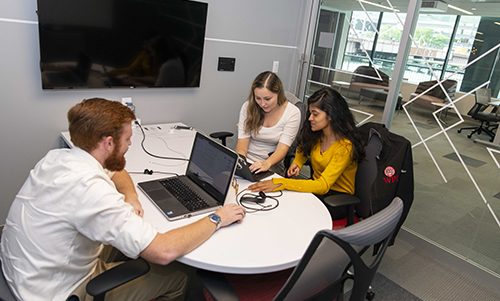
Working on the project at the Boston Project Center
A student team from WPI recently helped Massachusetts move one step closer to making sure its wastewater treatment facilities are ready for an emergency. The students, mechanical engineering major Faria Kader, biomedical engineering major Michael Kirejczyk, and biomedical engineering major Mary Louise Ross gathered information and data to complete an assessment and an analysis of treatment facilities across the state. They wanted to make sure each one is prepared for power outages and, if they are not, then determine what needs to be done.
The work was part of an Interactive Qualifying Project (IQP) — a project that requires teams to delve into problems that matter to real people — to help state agencies safeguard an uninterrupted wastewater treatment process, even in the event of power outages. The team was based at the Boston Project Center in Boston’s Seaport Neighborhood and close to the offices of the project sponsor, the Massachusetts Department of Environmental Protection (MassDEP).
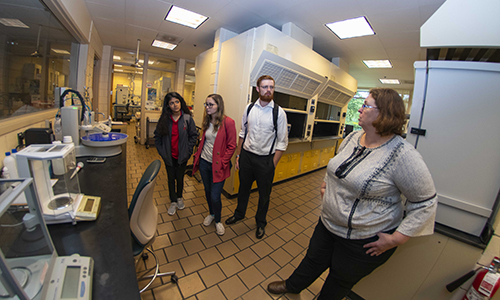
Participating in a water filtration plant tour
“Municipal water and wastewater facilities are critical infrastructure facilities,” says Michael DiBara, project manager with MassDEP. “They run 24/7. They require power at all times, even during events and interruption. "The WPI students helped distill disparate information to uncover where facilities are missing information or infrastructure that could contribute to an interruption in wastewater treatment.
Accurate information is essential for treatment facilities. “When water or sewage doesn't get treated, that can lead to extremely dangerous diseases and other illnesses,” says team member Kader. “In order to prevent that from happening and to keep all of us safe, the water we drink and the water that goes into public water systems — that needs to be treated.”
- Faria Kader, Junior
Preparation for an IQP starts early. “Before this project came about, we had worked with the students in planning,” says James Doucett, director of MassDEP’s Clean Energy Results Program. As the preparation takes place, a different focus can develop, so the back-and-forth discussions are helpful. “We actually conducted some in-person meetings. We provided scopes of work and draft scopes of work that were further refined and, ultimately, ended up into a bona fide project that's being implemented.”
Students worked collaboratively with MassDEP employees and teams to interview regional officers and facility managers to gather information about back-up power plans and equipment, and corral it all into a useable form.
When the students set out to assess the needs of wastewater facilities throughout the state, they began working with a MassDEP database. Finding some information missing, they reached out to facilities to ask about their power back-up strategies. Specifically, students were looking to see if they have a back-up generator, whether their back-up generator works, and whether they are coordinating with other towns to address power issues.
To gain a broader understanding of how water treatment and wastewater processing actually works, the students toured a water filtration facility and a wastewater treatment facility. Gaining firsthand knowledge of facility operations showed them where problems could develop and revealed how back-up power will work when needed.
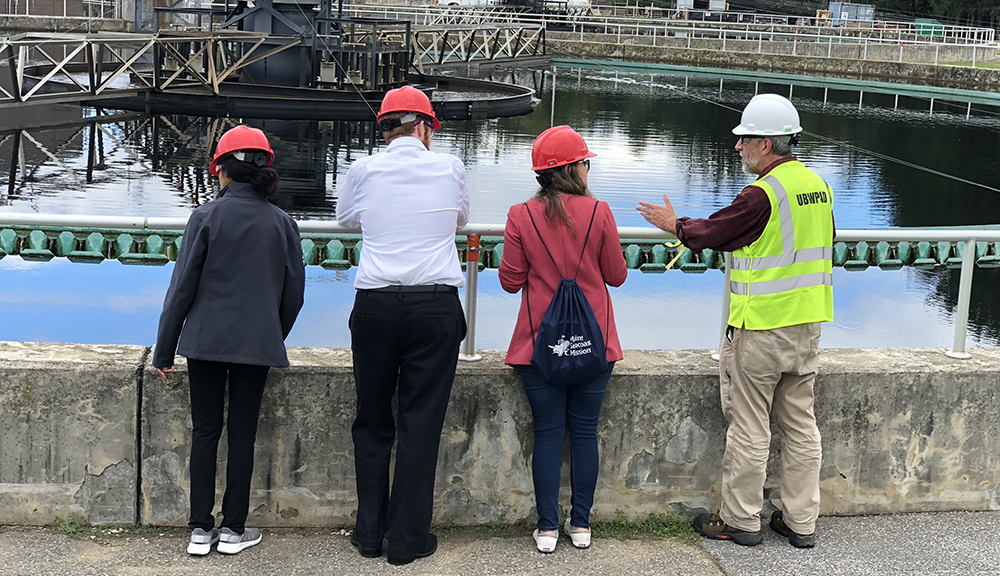
Gathering information during a wastewater treatment facility tour
“Getting to know that our sponsors really valued the public first and seeing what they were willing to do based on our recommendations ... that was extremely helpful in understanding the project as a whole,” says Kader. The student team worked closely with the MassDEP team, offering both their expertise and their full attention. “The WPI program is unique in that it provides a big chunk of resources and that’s a real advantage for students and sponsors,” says Ann Lowery, assistant commissioner, Bureau of Planning and Evaluation, MassDEP. “The students can tackle larger-in-scope projects and complete something.”
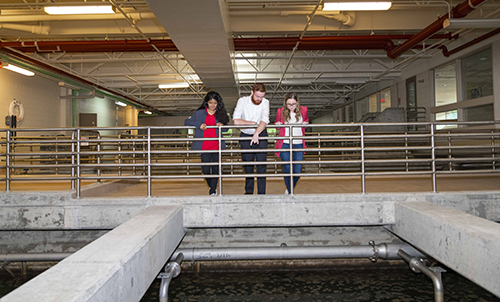
Conducting field work during a water filtration plant tour
When an emergency happens, crews and managers need information quickly, and it needs to be immediately useful. Visiting facilities and talking with sponsors gave students an idea of how the information would be used and should be presented. “What is the most important information they need and how can we display that so it's easily accessible for them?” asks Ross. The students found some unexpected gaps in the data, so they were able to clearly identify areas where MassDEP could address discrepancies. From there, the team created deliverables and also began establishing a foundation future student teams can build on. “On the production side, they created a prototype map to expand the next phase,” says DiBara.
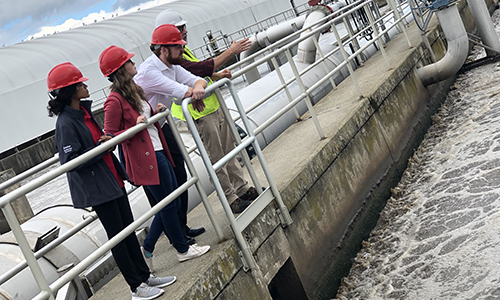
Learning about wastewater treatment processes during project field work
The prototype will serve a dual purpose for MassDEP, says Kristin Divris, of MassDEP’s Water Utility Resilience Program. “What they produced may serve as a model to duplicate similar information for public drinking water systems.” Eventually, says Doucett, the finished information will be distributed to facilities statewide so they can use it when needed.
- Kristin Divris, Project Sponsor
The students are gratified to know their work has impact. “We believe the problem we tackled is really important,” says Ross, “and it's good to know that other people agreed with us.”
Kader agrees. “It feels good to know that basically we are helping so many other people,” she says, “and we have a hand in making the community better.”
- Faria Kader, Junior
“The students are motivating to our team,” says DiBara. “You can see their excitement. And we, as sponsors, are also learning from the students. We have a long relationship with WPI and its IQP process. And we will continue that collaboration.”